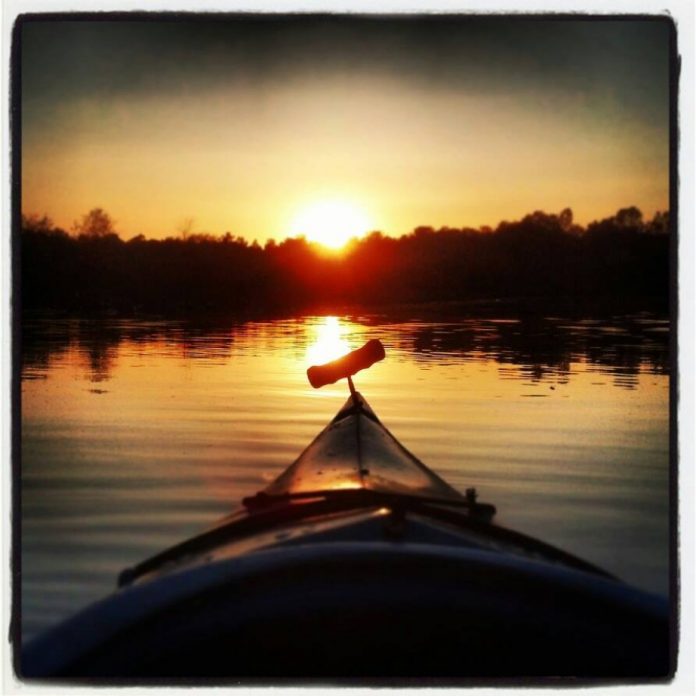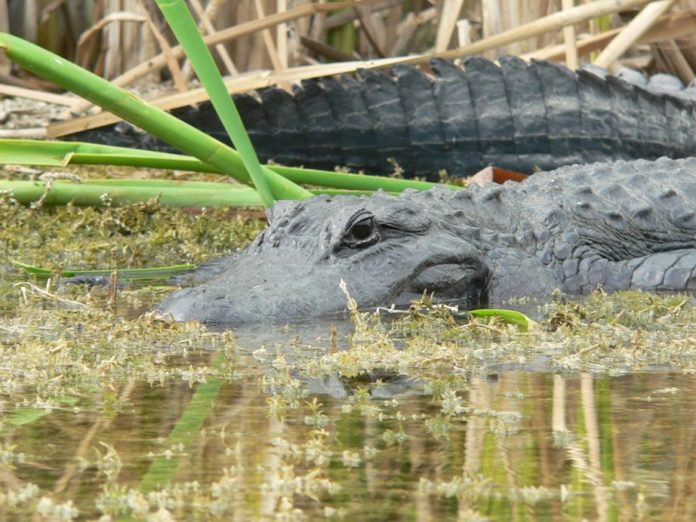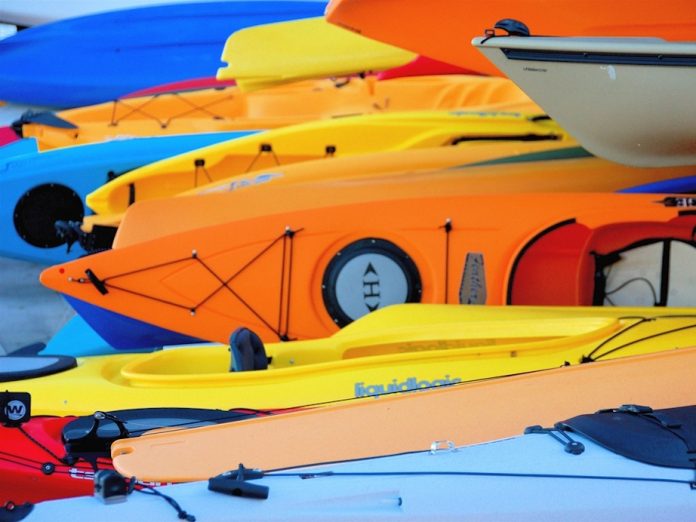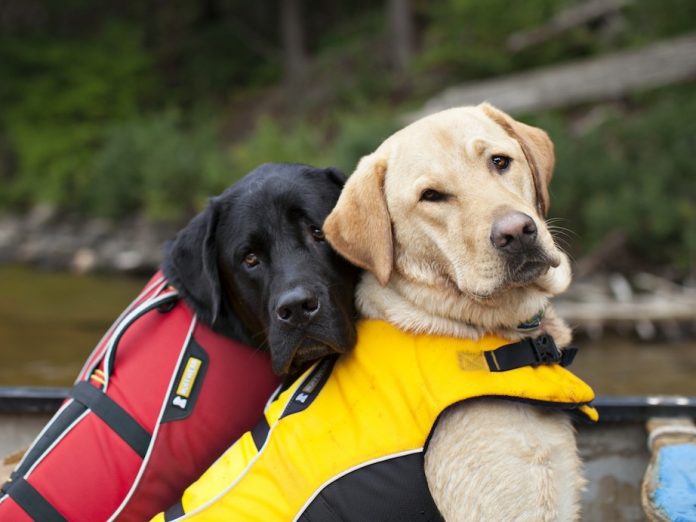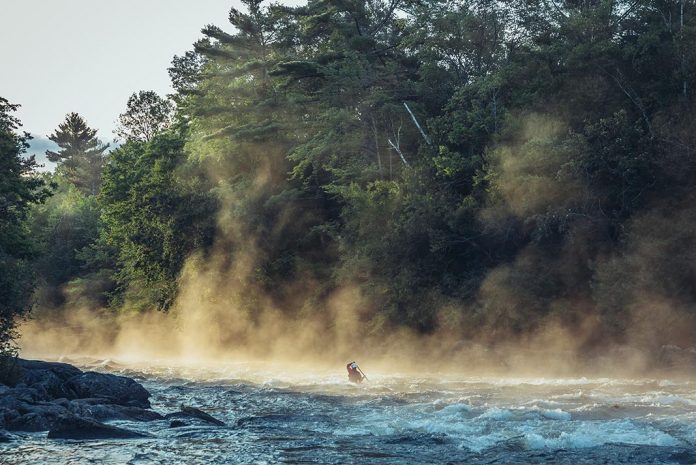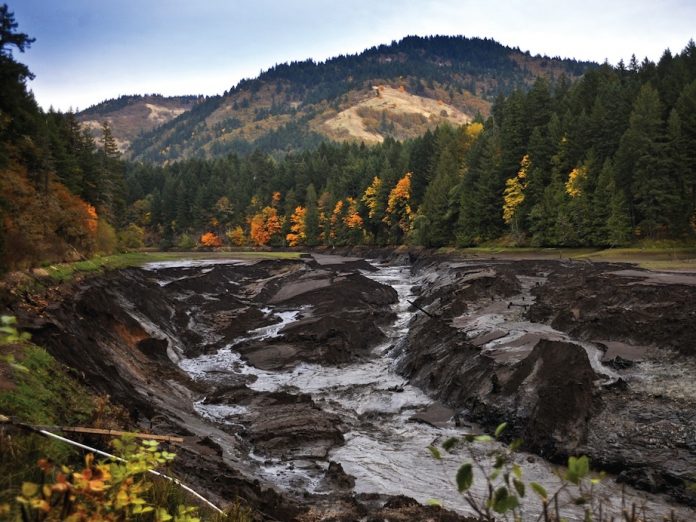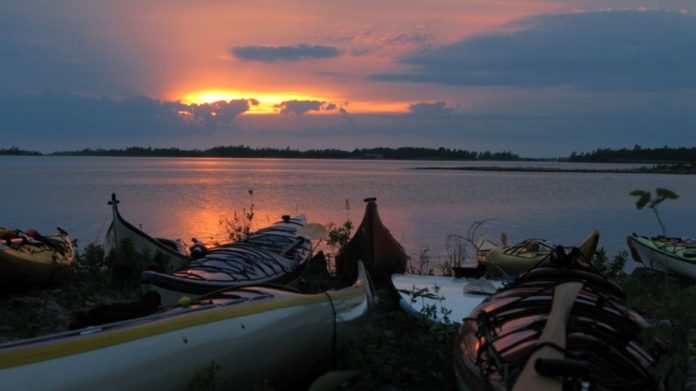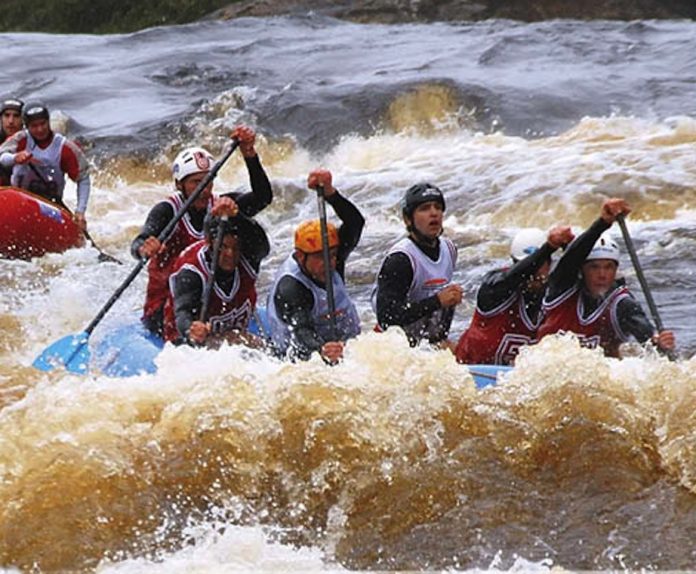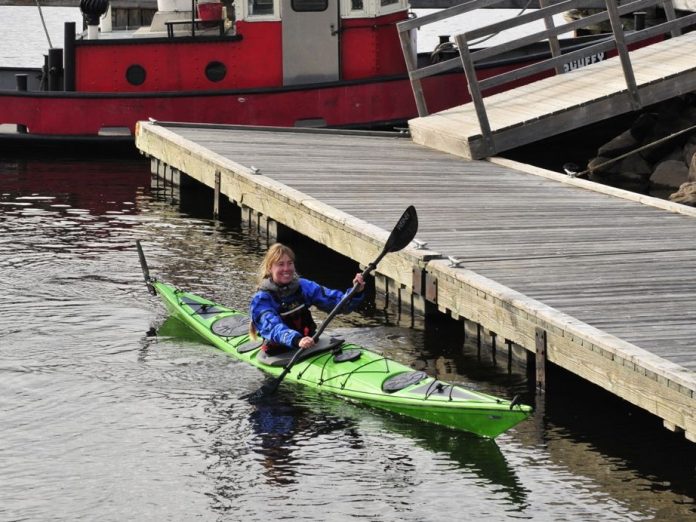This article originally appeared in Rapid magazine.
It takes a truly epic event to make whitewater kayakers stare intensely at a lake. So, there they sat, hundreds of them, restless in anticipation of the breach of the Condit Dam on the White Salmon River in south-central Washington.
For the past 11 days, PacifiCorp, owner of the dam, had been blasting a tunnel the width of a two-lane highway in the base of the 125-foot concrete wall. At noon on October 26, 2011, dynamite blew away the last 15 feet. The gauge maxed out at 13,000 cfs as the White Salmon River burst free for the first time in 98 years.
In just under an hour, a new gorge began to emerge where a deep, sediment-filled reservoir used to sit.
“From the edge of the canyon, the river looked like a jagged beast carving through the mud, huge walls of sediment sloughed off into the river, trees snapped, channels shifted,” says Louis Geltman, a local American Whitewater volunteer and avid class V kayaker. “Watching the blast, I felt a mix of pure awe at the river’s power and total elation that it was finally, irrevocably happening.”
Most dams, diversions, canals and other obstructions to downstream flow have existed longer than most kayakers. Many paddlers just accept these abnormalities—dry riverbeds, concrete barriers, reservoirs—and look elsewhere for their fix.
However, these structures are not as enduring and permanent as we may think. Today, boaters have begun to realize the potential for whitewater in the unlikeliest, yet most familiar places.
“It just did not make sense to have this river end in a dam,” says Ralph Bloemers, Columbia Gorge kayaker and staff attorney for the Portland, Oregon, non-profit Crag Law Center, one of the advocacy groups contributing to the project. “Now people can paddle from the headwaters all the way to the White Salmon’s confluence with the Columbia. This is the kind of adventure that kayakers dream about—and it is right in our backyard.”
Twenty years ago, everyone accepted the Condit Dam as a natural element of the landscape. Similarly, until the late ‘80s, no paddler imagined the Elwha River on Washington’s Olympic Peninsula as a whitewater run stretching from source to sea. It was treated more like a set of classic rapids sandwiched between two reservoirs.
Today, the need for fish passage has become the catalyst to bring some of these dams down.
The Elwha and Condit Dams will be two of the largest hydropower removal projects the world has ever seen. On the Elwha, paddlers will be able to explore a new stretch of a well-known river by 2014 as salmon swim upstream to their ancestral breeding grounds. The White Salmon will be open for recreation as early as August 2012.
In many cases, it is the paddlers who are instigating the change.
“Kayakers are working as lawyers for conservation groups, documenting the beauty of the river through film and coming together to collectively advocate for the restoration of the river system for fish and recreation,” says Bloemers.
With paddlers advocating for more flowing rivers, new whitewater playgrounds are poised to begin popping up everywhere.
Susan Hollingsworth is an American Whitewater Regional Coordinator, writer and kayaker living in the Columbia River Gorge. For more information on these and other dam removal projects visit www.americanwhitewater.org.
This article originally appeared in Rapid, Spring 2012. Download our free iPad/iPhone/iPod Touch App or Android App or read it here.



